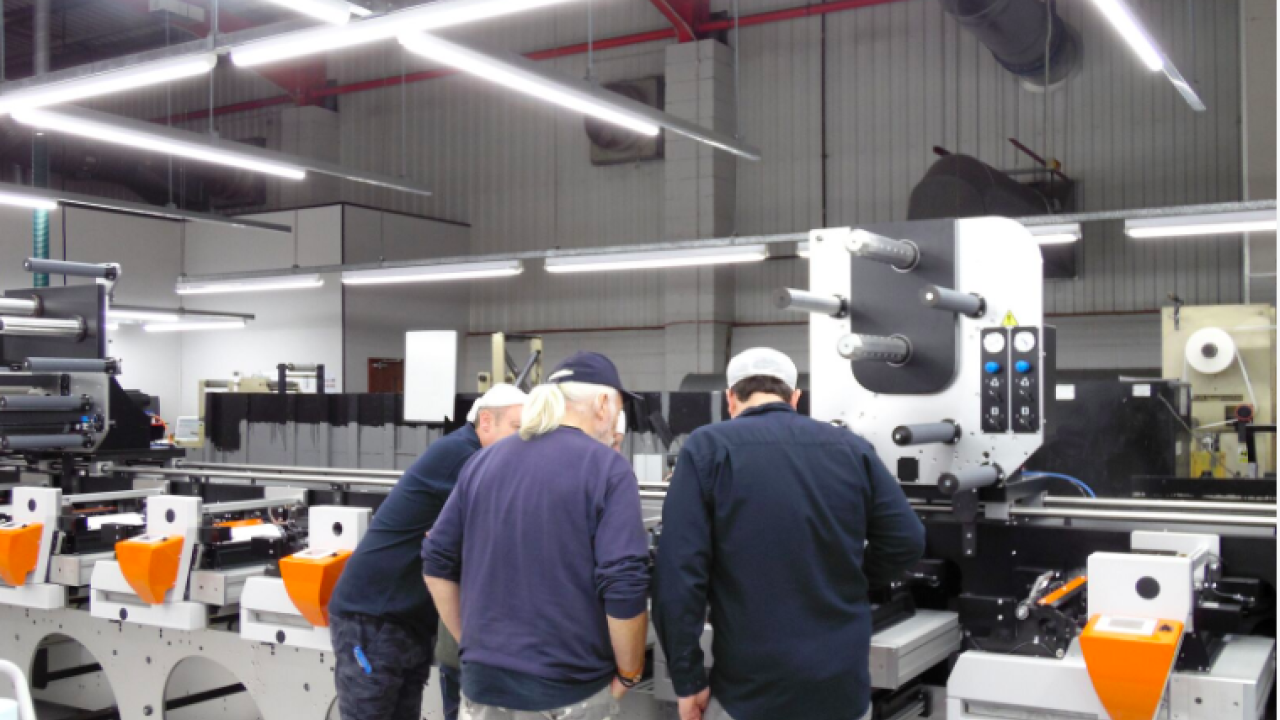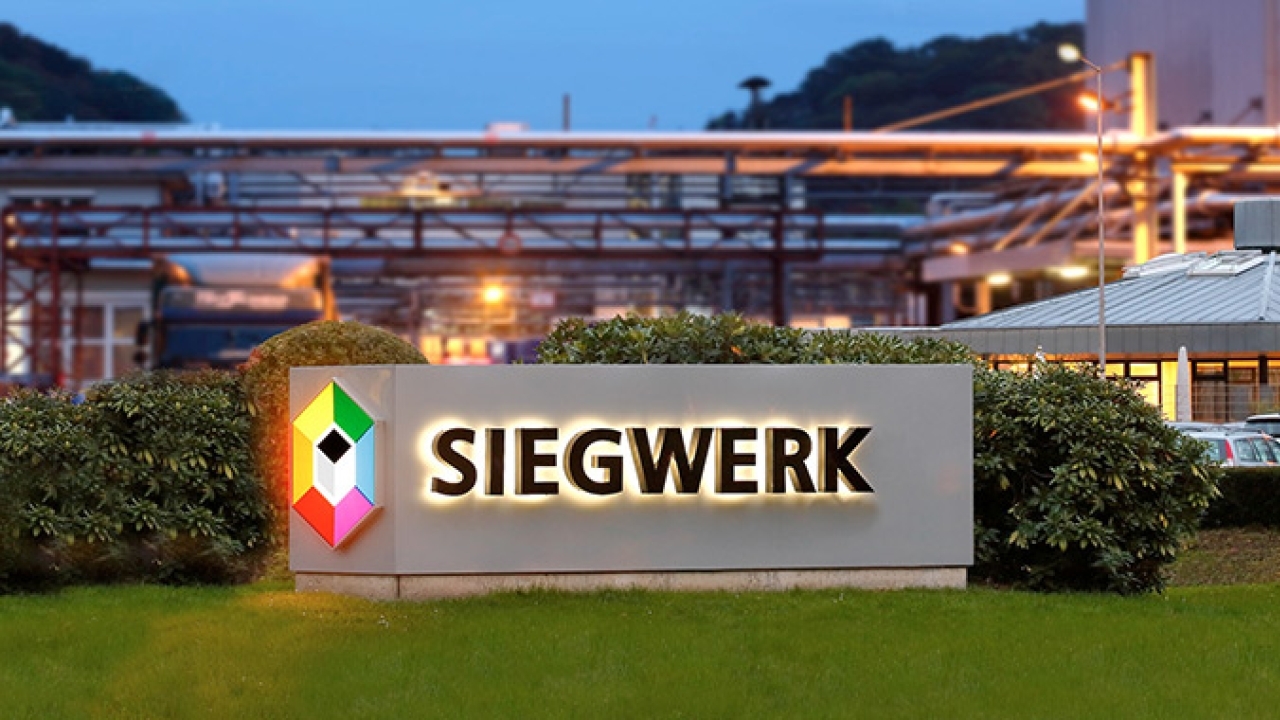Amberley states intent with flexo investment

Long known as a digital printing pioneer, Amberley installed the UK’s first HP Indigo ws4000 in 2003, not long after the company had gone through a management buyout (MBO) led by current owner and managing director Trevor Smith. Since then it has had seven HP Indigos and currently operates three WS6800 presses.
Amberley Labels was founded in 1978 by Chris Strong, moving to its current premises in the mid-1990s. Strong cites investment in both production and the office as central elements of the company’s success under his stewardship. The MBO allowed the company to continue this.
‘After the MBO, there was a concerted effort to continue what Chris had achieved through the transition,’ says Smith. ‘We’d much rather be around with a strong business model than pursue boom and bust. We have maintained the business model laid down by Chris with organic and steady growth based on superb customer service and high quality levels.’
Strong identifies how, when Amberley was founded, ‘he didn’t really need to sell’, with demand outstripping supply. The company also used to take on large volumes of trade work.
‘That has changed now,’ says Smith. ‘We’ve become a niche supplier within a niche. We have set ourselves very high standards that create a barrier to entry for certain jobs and applications, which is why we are so careful about investing. Some companies invest in a press and think they can produce work, but it’s not always as good as it needs to be.
‘If it was easy, everyone could do it. It’s true to say that if you buy a modern-day digital press, you can get good work from it. But the difference between good work and top-level work is people. That’s why all of our digital press operators are trained in Barcelona by HP Indigo, and how we have come to have so many Level 3 operators. To achieve top-level quality and service you need the best kit and the best people.’
Digital now accounts for the lion’s share of work produced by the company. Amberley has been very successful since adopting digital, with its journey including numerous notable projects, plaudits and awards. Amberley was selected as the only UK partner for Coca-Cola’s ‘Share a Coke’ campaign in Europe because of its experience and capability in digital printing using HP Indigo technology. A clear-on-clear label for Fortnum and Mason Still Blenheim Palace Natural Mineral Water won Finat and World Label Awards trophies. It has worked with Bramley and Gage for the rebrand of artisan liqueurs and premium gin using digitally printed labels. And the development team at Amberley met the challenge of Farrow & Ball, a manufacturer of heritage paints, to prove the capability of digital print before moving its color match labels from conventional to digital print.
‘The easiest thing to do is “me too”,’ affirms Strong. ‘The faith shown in digital speaks for itself. What can be achieved with digital now is unbelievable. When I was in the industry, others had started with digital but very few were able to make a success of it.’
Smith attributes much of this success to technical developments in digital, such as speed and quality, to the point where Amberley might not have looked to invest again in flexo were it not for ‘a core amount of work that stubbornly remains flexo, mainly multilayer.’
Flexo
Amberley’s previous investment in flexo had been a 9-color, 10in-wide Mark Andy. Smith says this was only the second UV flexo press sold by Mark Andy in the UK at the time, making it a technically advanced machine when installed.
‘We’ve always been an early adopter. It was a big investment back then. Now it is used to run specialist jobs as a piece of legacy equipment. Maintaining such equipment can become expensive. We haven’t got much in the way of traditional flexo work but instead we have complex short runs. That’s one of the reasons why it has taken us so long to invest again in flexo. Press speed is not so important to us, rather efficient set-up and being right first time.
‘Similarly, we aren’t desperately pursuing faster digital press speeds. There are companies making money from digital printing that is faster and faster but that’s not something we can do. Likewise, we do stuff that they can’t. We’ve probably got the same presses, but we want to engage and talk about work, and see how we can add value to a job.’
These considerations make the Edale FL3 a big investment for Amberley. Such was the importance of Amberley’s reinvestment in flexo that Chris Strong was present for the launch event, where he ceremonially cut the ribbon on the new press.
Evolution
Much like how Amberley has evolved over the last two decades, flexo press technology has changed to meet current and future demands placed on printers. As an example of this, Amberley’s Edale FL3 features AiiR print automation, as well as semi-rotary die-cutting, and a peel and reveal module. AiiR (autonomous inking, impression and print registration) uses precision camera technology to improve registration accuracy, while automated print pressure control reduces wastage and set-up times. By fully automating print and the registration processes, the level of operator intervention can be reduced, leading to fewer errors and a more consistent, higher quality final product. Automated finishing with semi-rotary die-cutting further reduces set-up times and waste, while reducing tooling cost and reliance on the operator.
‘The Edale press gives us lots of new things we can do,’ says Smith. ‘This will be extended if and when we make additions to the press, such as chill rollers to print unsupported film. That’s not going to be core work but it doesn’t hurt to have the option to run that type of job through the flexo press.
‘It gives us lots more opportunities. We don’t want to simply push flexo jobs back on to it. This press can do other things and we want to do different things with it.’
Smith concludes: ‘We chose Edale as much for the company as the technology. It is the right size for us to be able to work and engage with. And it doesn’t just sell presses, but has worked with us on projects. It is a vibrant company that challenges us.
‘What we got from HP was a company that dragged us forward; it has been similar with Edale.’
Stay up to date
Subscribe to the free Label News newsletter and receive the latest content every week. We'll never share your email address.


